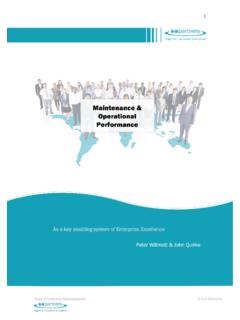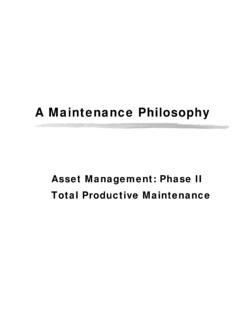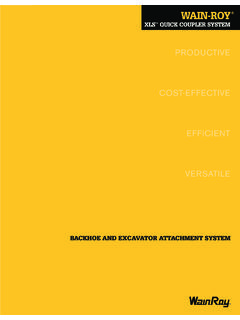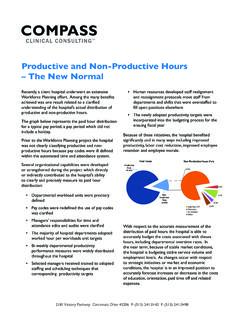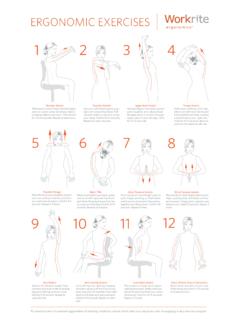Transcription of The Effects of Multitasking on Organizations
1 1 The Effects of Multitasking on OrganizationsThe Effects of Multitasking on OrganizationsIntroductionNearly two decades of academic research demonstrate the profound negative Effects that Multitasking has on the productivity of individuals1, yet job seekers around the world still tout their ability to multitask as a desirable skill. In many Organizations , Multitasking is worn as a badge of honor. However, research consistently shows that people who attempt to multitask suffer a wide array of negative Effects , from wasting 40 percent of one s productive time while switching tasks2 to experiencing a heightened susceptibility to all of the research on Multitasking has studied its Effects on individuals. Researchers have paid little attention to the Effects of Multitasking on Organizations . There are good reasons to believe that Multitasking has similar Effects at an organizational level. After all, people do not typically work independently in Organizations , but rather depend on others to complete preliminary tasks before they can start their own work.
2 If individual work is delayed due to Multitasking , overall project delays are exacerbated within an organization as delays cascade through the as individual Multitasking takes place when a single person s time is split between too many tasks, organizational Multitasking occurs when a group is focused on too many things, and its overall capacity is adversely affected. The end results are delays and interruptions; reduced quality and rework; peaks and valleys in workflow; and lack of proper preparation before tasks and examine the Effects of organizational Multitasking more rigorously, Realization, a provider of Flow-based Project Management software and services, studied 45 Organizations with between 1,000 and 50,000 employees and an average annual budget of more than $1 billion from a diverse range of industries including automotive, 1 American Psychological Associattion. Multitasking : Switching costs. Research in Action. 20 March 2006.
3 2 Ophira, Eyal, Nass, Clifford, and Wagner, Anthony Cognitive Control in Media Multitaskers. Proceedings of the National Academy of Sciences, Vol. 106 No. 33, August 25, Effects of Multitasking on Organizationsaerospace and defense, aviation, energy, semiconductors, software and pharmaceuticals that consciously implemented measures to reduce Multitasking in their Organizations . This research paper examines the Effects of organizational Multitasking within these Organizations and quantifies its effect on Effects of MultitaskingFor decades, academic research on Multitasking has demonstrated that human beings work much more effectively when concentrating on a single task at any given time, and that switching between multiple tasks leads to a host of negative phone usage while driving, for example, has been one of the most extensively studied instances of Multitasking , and multiple studies show that drivers are seriously impaired while using cell phones.
4 Initially, researchers thought that the physical device manipulation was responsible for the impairment, but later studies demonstrated that even hands-free devices can cause driving impairment equal to or worse than a .08 percent blood-alcohol level the legal threshold for impairment in most states in the Simply trying to do two different tasks simultaneously is enough to reduce one s effectiveness that look beyond the specific use case of mobile devices and driving generally show that Multitasking causes serious productivity declines. Switching between tasks can cause a loss of productivity as high as 40 percent when compared to single-tasking5 and workers who multitask are much less likely to engage in creative thinking than those whose work is not , habitual Multitasking appears to have long-term negative Effects as well. Habitual, heavy multitaskers are more susceptible to distraction by irrelevant stimuli at work than are habitual single-taskers7, and Multitasking makes individuals less capable of appropriately regulating their work sum, Multitasking makes people less productive, less creative and more likely to get thrown off task by Strayer, D.
5 L., Drews, F. A., and Crouch, D. J. Fatal distraction? A comparison of the cell-phone driver and the drunk driver. In D. V. McGehee, J. D. Lee, & M. Rizzo (Eds.) Driving Assessment 2003: International Symposium on Human Factors in Driver Assessment, Training, and Vehicle Design. Published by the Public Policy Center, University of Iowa (pp. 25-30). Rubinstein, Joshua S., Meyer, David E., and Evans, Jeffrey E. Executive control of cognitive processes in task switching. Journal of Experimental Psychology: Human Perception and Performance, Vol. 27(4), 2001, Amabile, Teresa M., Mueller, Jennifer S., Simpson, William B., Hadley, Constance N., Kramer, Steven J. and Fleming, Lee. Time Pressure and Creativity in Organizations : A Longitudinal Field Study. Harvard Business School Working Paper, No. 02-073, Ophira, Eyal, Nass, Clifford, and Wagner, Anthony Cognitive Control in Media Multitaskers. Proceedings of the National Academy of Sciences, Vol.
6 106 No. 33, August 25, Hamilton, R., et al. Being of two minds: Switching mindsets exhausts self-regulatory resources. Organizational Behavior and Human Decision Processes. Simple Multitasking TestEven without referencing the extensive history of Multitasking research, it is easy to demonstrate the ineffectiveness of Multitasking with a simple demonstration. All one needs is pen, paper and something to keep time. First, write the word multitask and once the word is complete, write the numerals 1 through 9 underneath each letter under m , write 1 , under u write 2 and so on. Finally, write the letters a through i underneath the numbers, with a under 1, b under 2, etc., all the way through to i. Time how long it takes to complete the task. When complete, it should look like this:multitask123456789abcdefghiNext, complete the same task, except this time, write the first character of each row in a column ( , m above 1 above a in the first column) followed by the second character of each row in a column beside the first column ( u above 2 above b ), and continuing in that manner until all rows are complete.
7 People who play this game are often shocked by how much more time they take when they are forced to switch between these simple tasks. Typically, it takes 50 percent longer to complete the task while Multitasking , but it s not unusual for it to take two or three times as Effects of Multitasking on OrganizationsWhile the negative Effects of Multitasking on individuals are well documented, little research has been conducted to examine the impact of Multitasking on Organizations as a whole. This study from Realization aims to provide original and vital research-based information and insight about the large scale impact of Multitasking on Effects of Organizational MultitaskingOrganizational Multitasking occurs when the efforts of an organization are divided among many open streams of work. Major forms of organizational Multitasking include: Peanut-butter spreading: Work-streams require multiple engineers, but only one engineer is assigned to each stream.
8 Unsynchronized priorities: Instead of groups working together on the same streams in tandem to take them to completion ( , a feature, a module or sub-system), each group is focused on different streams that do not overlap. High work-in-process for managers: Managers are supporting too many work-streams and projects at the same most work emerges from collective rather than individual efforts, organizational Multitasking causes far greater damage than individual Multitasking . The losses caused by Multitasking multiply and spread in a number of ways: Idle Time: Multitasked workers and groups keep others waiting for their output. When people do not have everything they need to take a task to completion, they start their work with incomplete inputs, which requires them to stop work before their task is finished. This, in turn, necessitates rework or causes the team to move on to other tasks, thereby putting more work into execution.
9 Unavailable Managers: When managers multitask, even small decisions can take days; instead of spending, say, a quality 15 minutes with people, they can afford only a rushed and ineffective two to three minutes. Loss of Control: Every task seems equally urgent. The truly critical issues and genuine bottlenecks cannot be identified, and the organization wastes its resources solving the wrong changing individual habits is very difficult, all that is needed to stop organizational Multitasking is a process for reducing work in progress, and the establishment of clear and simple priorities. This method of planning and execution is called Flow-based Project Management (see Appendix A). With Flow-based Project Management, people can focus on one task at a time and take it to completion without Methodology and ResultsRealization examined 45 case studies in which Organizations implemented Flow-based Project Management software and services.
10 The 45 companies had an average of 20,500 employees and median annual revenue was $1 billion. The Organizations came from a wide range of industries, and the following list provides a breakout of those industries. A&D: 7 Amusement parks: 1 Automotive: 2 Communications: 1 Consumer appliances: 1 Consumer electronics: 1 Energy: 8 IT: 1 Life sciences: 4 Manufacturing: 5 Military: 6 Mining: 1 Petrochemistry: 1 Professional services: 1 Semiconductors: 2 Steel: 2 Telecommunications: 14 The Effects of Multitasking on OrganizationsOrganization s IndustryType of Projects in ExecutionPr oductivity Improvement Six Months After Reducing Organizational MultitaskingA&DEngineering28%A&DEngineer ing64%A&DMaintenance23%A&DMaintenance30% A&DMaintenance15%A&DEngineering42%A&DEng ineering20%Amusement parksEngineering26%AutomotiveEngineering 20%AutomotiveEngineering63%Communication sEngineering58%Consumer appliancesEngineering84%Consumer electronicsEngineering150%EnergyEngineer ing43%EnergyEngineering63%EnergyEngineer ing29%EnergyConstruction40%EnergyConstru ction22%EnergyEngineering16%EnergyEngine ering30%EnergyEngineering25%ITSoftware Development20%Life scienceR&D83%Life scienceR&D38%Life scienceEngineering50%Life



